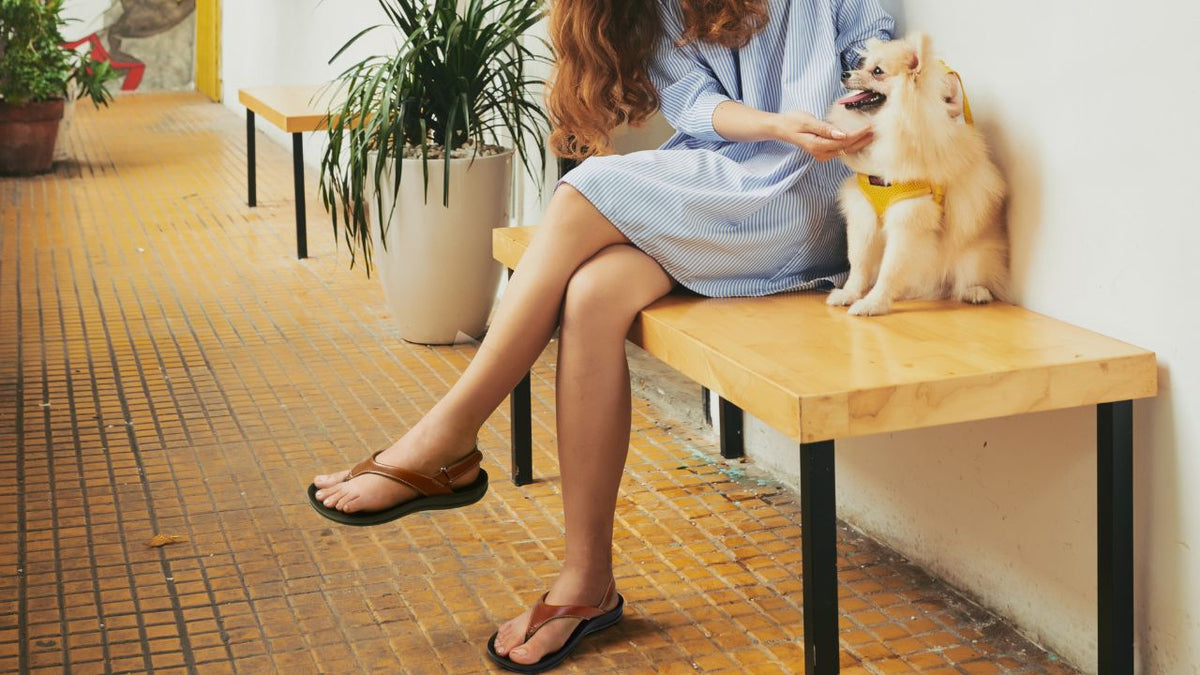The Real Reason Your Heels Feel Dry and Cracked
If you’ve ever noticed rough, dry, or cracked skin on your heels after a long day in sandals or flats, your footwear might be the culprit. Most people blame the weather or lack of moisturizer, but often, the wrong shoes are what trigger dry heels in the first place. Shoes that don’t support your heel properly cause constant friction, pressure, and uneven weight distribution — all of which lead to hardened, dehydrated skin.
Over time, the heel’s protective layer thickens and loses elasticity, resulting in painful cracks and discomfort. Simply applying cream won’t fix the root issue. You need to address both footwear quality and skincare habits to achieve lasting heel relief.
How the Wrong Shoes Damage Your Heels
Many everyday shoe styles — from flip flops to flats — are designed more for looks than for comfort. Here’s how poor footwear contributes to dry, painful heels:
1. Lack of Cushioning: Flat, hard soles provide no shock absorption, leading to increased heel impact.
2. Poor Arch Support: When arches collapse, excess pressure shifts to your heels.
3. Open-Back Design: Constant exposure to dust, heat, and dry air worsens heel dehydration.
4. Synthetic Materials: Non-breathable soles and straps trap moisture, making skin prone to cracking once dry.
5. Improper Fit: Loose sandals cause friction, while tight shoes restrict blood circulation.
6. No Heel Cup: Without proper contouring, heels slide around — creating micro-abrasions that toughen the skin.
If you frequently wear low-cost, non-supportive sandals, your heel’s outer layer thickens to protect itself from friction — leading to calluses and deep cracks that can even become painful or infected.
Why Moisture Alone Won’t Fix Dry Heels
Many people rely on lotions and foot creams, but those only offer temporary relief if your shoes keep damaging your heels.
If the skin barrier continues to experience friction and pressure, the dryness will always return. To truly heal cracked heels, you need a dual approach — consistent moisturizing and supportive footwear. Think of it like skincare for your feet: you wouldn’t moisturize your hands and then wash them with harsh soap all day, right? The same logic applies here.
That’s why pairing hydration with supportive, moisturizing sandals makes all the difference.
Footwear Features That Help Heal Dry Heels
Switching to better footwear is one of the fastest ways to stop heel dryness from recurring. Here’s what to look for when choosing sandals or flip flops:
1. Cushioned Footbeds – Reduce pressure and friction that dry out skin.
2. Deep Heel Cup – Cradles your heel and prevents sliding, minimizing micro-tears.
3. Soft, Smooth Materials – Prevent rubbing and irritation that cause calluses.
4. Moisture-Wicking Linings – Keep your feet dry without over-drying the skin.
5. Ergonomic Arch Support – Distributes weight evenly to prevent heel overload.
6. Flexible Sole Construction – Adapts to movement without causing heel strain.
7. Breathable Design – Allows airflow while maintaining healthy moisture levels.
A pair of supportive, cushioned flip flops or orthopedic sandals can dramatically improve heel comfort by reducing friction and maintaining natural hydration.
Best At-Home Treatments for Dry Heels
Once you’ve switched to the right footwear, add these easy steps to your foot care routine to repair existing heel cracks and keep your feet soft:
1. Soak and Exfoliate
Start with a warm foot soak for 10–15 minutes. Add Epsom salt or gentle soap to soften hardened skin. Then, use a pumice stone or foot file to remove dead skin.
2. Deep Moisturize
Apply a rich heel balm containing urea, shea butter, or coconut oil. These ingredients penetrate deeply and restore elasticity.
3. Seal in Moisture
After moisturizing, wear breathable cotton socks for a few hours (or overnight) to lock in hydration.
4. Avoid Walking Barefoot
Bare floors, especially tile or concrete, strip away natural oils and worsen dryness.
5. Rotate Your Footwear
Alternate between shoes with open and closed backs to give your heels recovery time.
6. Use the Right Footwear Indoors
Instead of walking barefoot or in flat slides, choose the best flip flops for women that feature cushioned soles and smooth, supportive materials — ideal for both comfort and protection.
When to See a Specialist
If heel cracks become deep, painful, or start bleeding, consult a podiatrist. Chronic dryness might also indicate underlying issues like eczema, psoriasis, or diabetes-related skin problems. In these cases, professional care ensures you get the right combination of medical treatment and footwear recommendations.
Final Thoughts
Dry, cracked heels aren’t inevitable — they’re a signal your footwear and self-care routine need an upgrade. The solution lies in combining proper hydration, exfoliation, and, most importantly, supportive footwear that protects your heels from stress and friction.
The best flip flops for women not only add comfort but actively promote heel recovery with soft soles, cushioning, and arch support. Your feet deserve care that goes beyond aesthetics — because comfort and health always start from the ground up.







